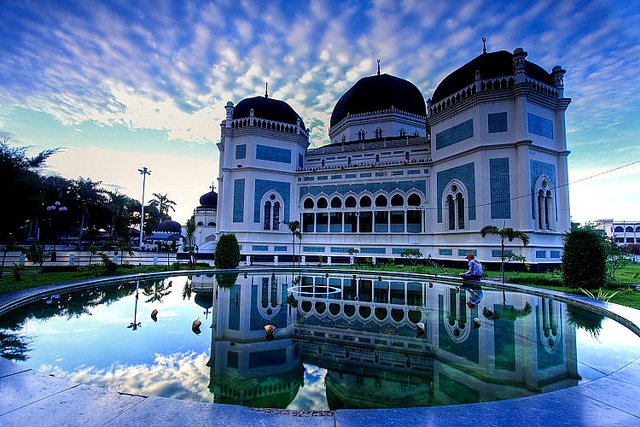Horas! That’s “Welcome!” in the Batak language. While it may really sound like a roaring exclamation to the first time visitor, Medan exudes a fascinating exotic gateway to the Island Of Sumatra. It is the regional capital of the North Sumatra province of Indonesia. True to its name, which means “vast field,” it is also the largest city in the country outside Java Island. Its close proximity to nearby countries such as Malaysia and Singapore, makes it the hub for all international flights into Sumatra and to nearby Southeast Asian cities such as Penang and Kuala Lumpur. Known for its unhurried friendliness, Medan has been dubbed “The Smiling City of Indonesia ” and is home to around 2.5 million people, a population among the most diverse in the country. Thanks to its strategic geographical location, Medan is inhabited by many settlers from other countries who came to trade and live around it with the majority of its residents being part of the North Sumatra race, also known as the Bataks, whose regional diversity comprised of more than 52 tribal languages across the island. While there is no single ethnic group forming the majority; the largest ethnic groups in Medan are the Chinese, Malays, Javanese, Toba-Batak, Minangkabau, Mandailing Batak, Karo Batak, as well as surprisingly, Southern Indians!
Medan is indeed a big city sprawling in the pulsating development of its current modernity as a result of the migration of people seeking a better standard of living in the urban settlements vis a vis the booming Indonesian economy. It is fairly modern with a lot of good amenities, ranging from modern theme parks and enormous malls to the most well preserved hotels with a local identity and charming spas. However, it also has a great deal of past colonial heritage landmarks that distinguished itself uniquely from the Lake Toba region, which happens to be the main tourist attraction in Sumatra. The buildings from the Dutch era remain in remarkably good shape which were designed by a clutch of Dutch East Indies planners whose holistic features are considered to be the signature remnants of Dutch architecture in this part of the world. But then again, there are also many structures of Oriental origin built by the Dutch colonialists that can be found around the city namely the Maimoon Palace, Mesjid Raya, the General Post Office, the City Hall Building as well as the remarkable Tirtanadi Water Tower, better known as The Eiffel Tower of Medan constructed in 1896. Notwithstanding too are the Hindu temples and Buddhist shrines and quaint Chinese shop houses which are considered to be a common part of the city’s local building landscape. A Dutch colony for 350 years, Indonesia has plenty of historical buildings still intact, and Medan is fortunate to have its share of this invaluable glorious treasures.
Article from SUTRA Newsletter, Issue 26:
https://www.sutra.my/wp-content/uploads/2015/04/Issue-26-Q4-2014.pdf





















